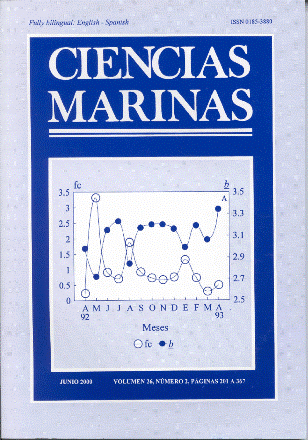Tidal dynamics and energy budget in the Gulf of California
Main Article Content
Abstract
The dynamics and energetic behavior of the tides in the Gulf of California were studied with their principal constituents. Three cases were chosen: the first included the M2 constituent; the second, the two principal semidiurnal constituents; and the third, the seven most important tidal constituents in the gulf. The results show that the tide was successfully modeled for all constituents and for all cases. It was proved that small changes in the friction coefficient produce important errors in the tidal adjustment. The dynamics and energetic behavior of the tides did not change while varying the friction coefficient, even when more constituents were included. The most important forces that maintain the momentum balance in the gulf are the pressure gradient, Coriolis and friction. In the northern gulf the most important forces are the pressure gradient and friction, while in the southern gulf the most important forces are in geostrophic balance. Advection is also important in the northern gulf and in the archipelago of the large islands. The regions where most of the tidal energy is dissipated are the northern gulf and the archipelago, especially in the Upper Gulf, Adair Bay, Ballenas Channel, and San Lorenzo and San Esteban sills. The inclusion of more constituents introduced more momentum and energy to the gulf, and part of this momentum and energy was transferred to the mean field and part to the low-frequency field. The results show that changes in the friction coefficient did not affect the tidal behavior in the gulf; nevertheless, the tidal energy dissipation estimated inside the gulf was affected.
Downloads
Article Details
This is an open access article distributed under a Creative Commons Attribution 4.0 License, which allows you to share and adapt the work, as long as you give appropriate credit to the original author(s) and the source, provide a link to the Creative Commons license, and indicate if changes were made. Figures, tables and other elements in the article are included in the article’s CC BY 4.0 license, unless otherwise indicated. The journal title is protected by copyrights and not subject to this license. Full license deed can be viewed here.

